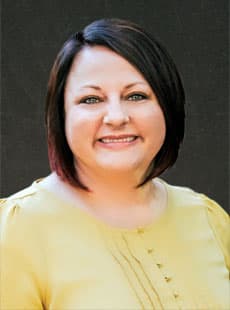Utah Core
•
Curriculum Search
•
All Language Arts - Elementary Lesson Plans
•
USBE Language Arts - Elementary website
Educational Links
Language Standard 5
Demonstrate understanding of figurative language, word relationships, and nuances in word meanings.-
Can You Haiku?
Haiku show us the world in a water drop, providing a tiny lens through which to glimpse the miracle and mystery of life. Combining close observation with a moment of reflection, this simple yet highly sophisticated form of poetry can help sharpen students' response to language and enhance their powers of self-expression. In this lesson, students learn the rules and conventions of haiku, study examples by Japanese masters, and create haiku of their own. -
Delicious, Tasty, Yummy: Enriching Writing with Adjectives and Synonyms
Students' vocabulary is expanded and their writing is enriched when they are encouraged to use a variety of adjectives to help readers "see, taste, and feel" what they've written. In this lesson for grades 3 and 4, picture books are used as a springboard for helping students define, identify, and practice using adjectives and synonyms. They develop webbed lists and then put their new vocabulary skills to use by writing form poems. -
Figurative Language: Teaching Idioms
In this lesson, students explore figurative language with a focus on the literal versus the metaphorical translations of idioms. Through read-alouds, teacher modeling, and student-centered activities that are presented in the classroom, students will further develop their understanding of figurative language. -
Language Meets Music
This Teaching Channel video and lesson plan helps students understand and use similes to express ideas in writing. (14 minutes) -
Learning to Learn with Miss Alaineus: A Vocabulary Disaster
After a read-aloud of the picture book Miss Alaineus: A Vocabulary Disaster, students combine vocabulary exploration with word play by planning their own vocabulary parade, modeled on the activities in the text. Students brainstorm a list of vocabulary terms from a recent unit of study and then design concrete ways to illustrate the terms. The presentation of terms can be in the form of a parade (an appropriate substitute for Halloween activities), or a video, which might play during parent conferences or open house. -
Lonely as a Cloud: Using Poetry to Understand Similes
Students will gain knowledge by defining the term simile; apply this knowledge by identifying examples of similes in literature and poetry; practice analysis by examining the purpose and effect of similes in poetry; synthesize their knowledge by using a graphic organizer to create their own similes and then incorporating these similes into their own writing. -
My World of Words: Building Vocabulary Lists
This lesson from ReadWriteThink uses students' areas of interest both in and out of school to generate personalized vocabulary lists. Working in small groups, students select their own vocabulary words and research their meanings. In a culminating activity that uses text and illustration, each student will create a "My World of Words Journal." -
Paint By Idioms
Idioms add color to language. Help Salvabear Dali finish his paintings by identifying the correct expression.


 UTAH EDUCATION NETWORK
UTAH EDUCATION NETWORK

 Justin
Justin Braxton
Braxton Dani
Dani Kayla
Kayla Katie
Katie Matthew
Matthew Rob
Rob Val
Val
